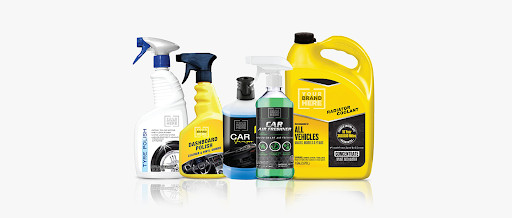Top 8 Mistakes to Avoid When Creating Your Private Label Liquid Hygiene Products
Launching your own private label hygiene liquids can be an exciting and rewarding business opportunity, offering the chance to create a brand that reflects your vision and meets growing consumer demand for high-quality, safe, and effective hygiene products. However, success in this industry is far from automatic. Many entrepreneurs dive straight into production, eager to get their products on shelves or online, without fully understanding the complexities involved. From choosing the right formulation and packaging to navigating regulatory requirements and ensuring consistent quality, there are numerous challenges that can catch first-time brand owners off guard.
In this blog, we will walk you through the top 8 mistakes to avoid when creating your hygiene product line. Whether you are planning to develop hand washes, sanitizers, or wet wipes, understanding these critical steps will help you build a strong foundation for lasting success.
1. Ignoring Market Research
One of the most common pitfalls is skipping in-depth market research. Understanding consumer preferences, trends, and competitor offerings is essential. For example, antibacterial hand washes remain popular, but eco-friendly formulations are becoming increasingly important. Without proper research, you might invest in a product that does not resonate with your target audience.
Practical tip: Conduct surveys, monitor social media discussions, and analyze competitors to identify gaps in the market. Knowing your audience’s preferences will help you tailor your product line, from scent and texture to packaging design.
2. Choosing the Wrong Manufacturing Partner
Selecting an unreliable manufacturer can derail your product launch. Working with experienced hygienic products manufacturing companies ensures that your products meet safety standards and quality benchmarks. Poor manufacturing can result in inconsistent textures, ineffective cleaning, or regulatory issues.
Practical tip: Look for manufacturers with proven expertise, robust quality control processes, and transparent communication. Request samples and check references before finalizing a partner.
3. Overlooking Regulatory Compliance
Every country has strict guidelines for hygiene products, including ingredients, labeling, and safety testing. Ignoring these regulations can lead to fines, product recalls, or reputational damage. Ingredients must be safe, non-toxic, and clearly listed on packaging.
Practical tip: Familiarize yourself with local and international regulations, and ensure your manufacturer conducts proper compliance testing. Investing time in legal checks early can prevent costly mistakes later.
4. Skimping on Formulation Quality
Quality matters. Many brands make the mistake of opting for cheaper formulations to save costs, which can compromise product effectiveness. A hand sanitizer that does not kill germs or a liquid soap that irritates skin will harm your brand reputation.
Practical tip: Work closely with R&D teams to develop formulations that balance effectiveness, skin-friendliness, and fragrance. Test multiple batches before finalizing your product to ensure consistency.
5. Neglecting Packaging Design
Packaging is more than visual appeal. It affects usability, shelf life, and consumer perception. Poor packaging can lead to leaks, drying out of wipes, or difficult dispensing, frustrating customers.
Practical tip: Choose packaging that is practical, durable, and visually appealing. Consider eco-friendly materials and user-friendly features such as flip-top caps or resealable packets. Remember, packaging often creates the first impression of your brand.
6. Not Differentiating Your Brand
In a crowded hygiene product market, standing out is essential. Simply replicating existing products will not attract loyal customers. A lack of differentiation can make your brand blend into the sea of competitors.
Practical tip: Identify unique selling points such as natural ingredients, hypoallergenic formulations, or innovative scents. Highlight these differences in your marketing campaigns to communicate value clearly.
7. Underestimating Inventory Management
Many entrepreneurs make the mistake of overproducing or underproducing, both of which can hurt profitability. Excess inventory increases storage costs and the risk of product expiry, while low stock can lead to missed sales and disappointed customers.
Practical tip: Use demand forecasting and start with smaller production batches. Track sales trends and adjust production accordingly. Smart inventory management ensures consistent supply without unnecessary waste.
8. Ignoring Marketing and Branding
Even the best private label wet wipes will not sell if your marketing strategy is weak. Neglecting branding, social media presence, or online visibility can limit your reach and slow growth.
Practical tip: Develop a clear brand identity, including logo, colors, and messaging. Leverage social media, influencers, and digital marketing campaigns to build awareness. Storytelling about your product’s benefits, like eco-friendliness or skin safety, can create a lasting impression.
Final Thoughts
Creating a successful line of private label hygiene liquids or wet wipes requires foresight, planning, and attention to detail. Avoiding mistakes like inadequate research, poor manufacturing, or weak marketing can save time, money, and frustration. Partnering with reputable hygienic products manufacturing companies, investing in high-quality formulations, and focusing on differentiation ensures your brand meets customer expectations and thrives in a competitive market.
Perfect Hygiene that offer end-to-end solutions, from formulation to packaging and regulatory support, can make the process seamless, for entrepreneurs looking to start their private label journey confidently. Addressing these common pitfalls sets your brand up for long-term growth and consumer trust.


Leave a Reply
Want to join the discussion?Feel free to contribute!